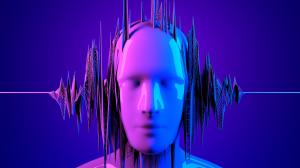AI Dubbing Replaces Human Voices in Film Premiere, Signals Industry-Wide Shift
AI dubbing is reshaping media, marketing, and training content with speed and scale, raising both opportunities and ethical concerns.
DE, UNITED STATES, June 17, 2025 /EINPresswire.com/ -- In a landmark moment for the global media industry, the Swedish sci-fi film Watch the Skies has premiered with a fully AI-generated English dub, marking a clear break from traditional dubbing methods involving human voice actors.The film’s cast spoke only Swedish, but artificial intelligence translated and dubbed the entire dialogue into English, synchronizing voice and lip movement without any studio recordings or live voice performances. This premiere underscores a sweeping transformation in how video content is localized worldwide. AI-generated voices are now able to mimic tone, pacing, and emotional nuance, delivering cost-effective, multilingual content at scale.
What once required professional sound booths, voice artists, and weeks of production time can now be handled with a few clicks from a laptop. Content creators across platforms like YouTube, TikTok, LinkedIn, and internal communications teams are increasingly relying on AI to break language barriers.
To better understand this shift, we spoke with Berkay Kınacı, Chief Operating Officer of Speaktor, an AI voice platform that provides dubbing solutions for the enterprise and education sectors. Speaktor allows users to upload videos or text and generate natural-sounding speech in dozens of languages within minutes.
“We’re seeing a major transition from entertainment being the primary use case to everyday business communication becoming the norm,” said Kınacı. “Our clients use AI dubbing for onboarding, e-learning, and marketing videos across international teams. Localization with voice is now a standard expectation.”
Kınacı emphasized that as demand rises, ethical considerations play a larger role in client expectations. “We train on licensed data only,” he said. “Clients want scale and speed, but increasingly, they ask: is this ethical? Is it consented? That tells us AI isn’t just a tool; it’s part of the communication infrastructure now.”
Speaktor, which operates under the parent company Tor.app, has built its reputation by focusing on scalable, responsible AI voice tools. Rather than replacing human creativity, the platform aims to unlock access to voice production that was previously constrained by time and cost.
AI dubbing is no longer limited to entertainment. In South Korea, creators use it to translate K-pop commentary and tutorials. NGOs deploy it to deliver public health messages in rural dialects, bypassing literacy barriers through mobile video. Educational platforms integrate multilingual voiceovers to broaden access. Businesses use it for multilingual pitch decks and training videos.
Still, the rise of AI dubbing is not without controversy. Netflix has faced backlash over synthetic voice experiments that alter facial expressions and voice simultaneously, with some viewers labeling the result 'creepy.' Voice actors have also spoken out, raising concerns over consent, job security, and emotional authenticity in AI-replicated performances.
Critics warn of a 'flattening effect,' where AI may technically reproduce speech but lack the depth and nuance of emotions like sarcasm, humor, or grief. Early adoption is overwhelming: around 82% of international subscribers say they prefer AI dubbing over subtitles or old-fashioned voiceovers. In an industry where identity and performance are deeply tied to voice, unauthorized mimicry is a personal and professional issue.
To address this, several major companies, including Amazon, have adopted hybrid workflows that combine AI automation with human oversight. These human-in-the-loop models allow editors to refine tone, ensure cultural sensitivity, and preserve emotional quality.
“AI brings efficiency, but human input ensures credibility,” said Kınacı. “It’s not about replacement; it’s about responsible scale.”
Looking ahead, AI dubbing is expanding into real-time applications. Startups are developing systems that provide live translation with synchronized facial expressions in Zoom meetings and live video streams. A product demo recorded in English could soon be instantly transformed into accurate, lip-synced versions in multiple languages such as Arabic, Hindi, or German.
However, these advances also raise pressing questions. Who owns a synthetic voice or a digitally rendered likeness? Should faces and voices be licensed like stock music or photography? How will audiences know if what they’re watching is real or synthetic?
“The technology is advancing quickly,” Kınacı concluded. “But the frameworks around ownership and consent need to catch up. Clients are asking those questions more than ever, and it’s up to the industry to answer.”
Direncan Elmas
Transkriptor, Inc.
+90 542 633 04 60
email us here
Legal Disclaimer:
EIN Presswire provides this news content "as is" without warranty of any kind. We do not accept any responsibility or liability for the accuracy, content, images, videos, licenses, completeness, legality, or reliability of the information contained in this article. If you have any complaints or copyright issues related to this article, kindly contact the author above.

